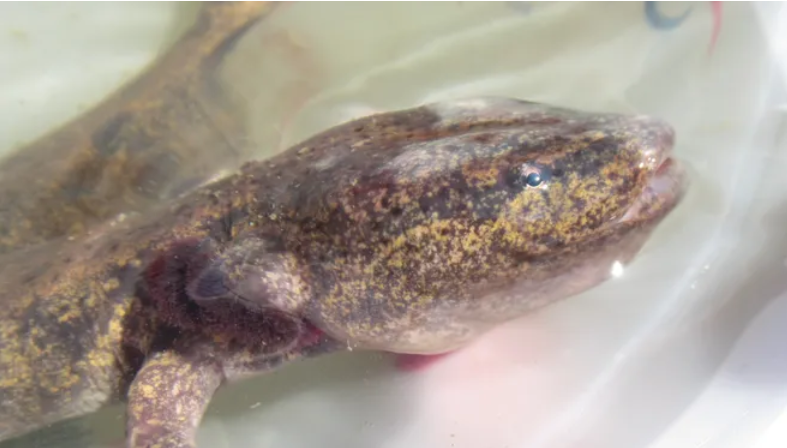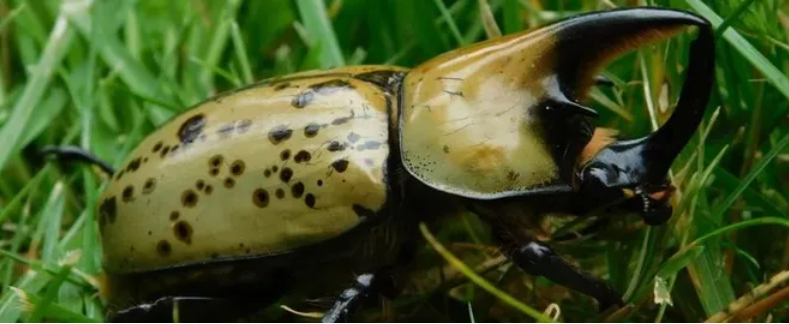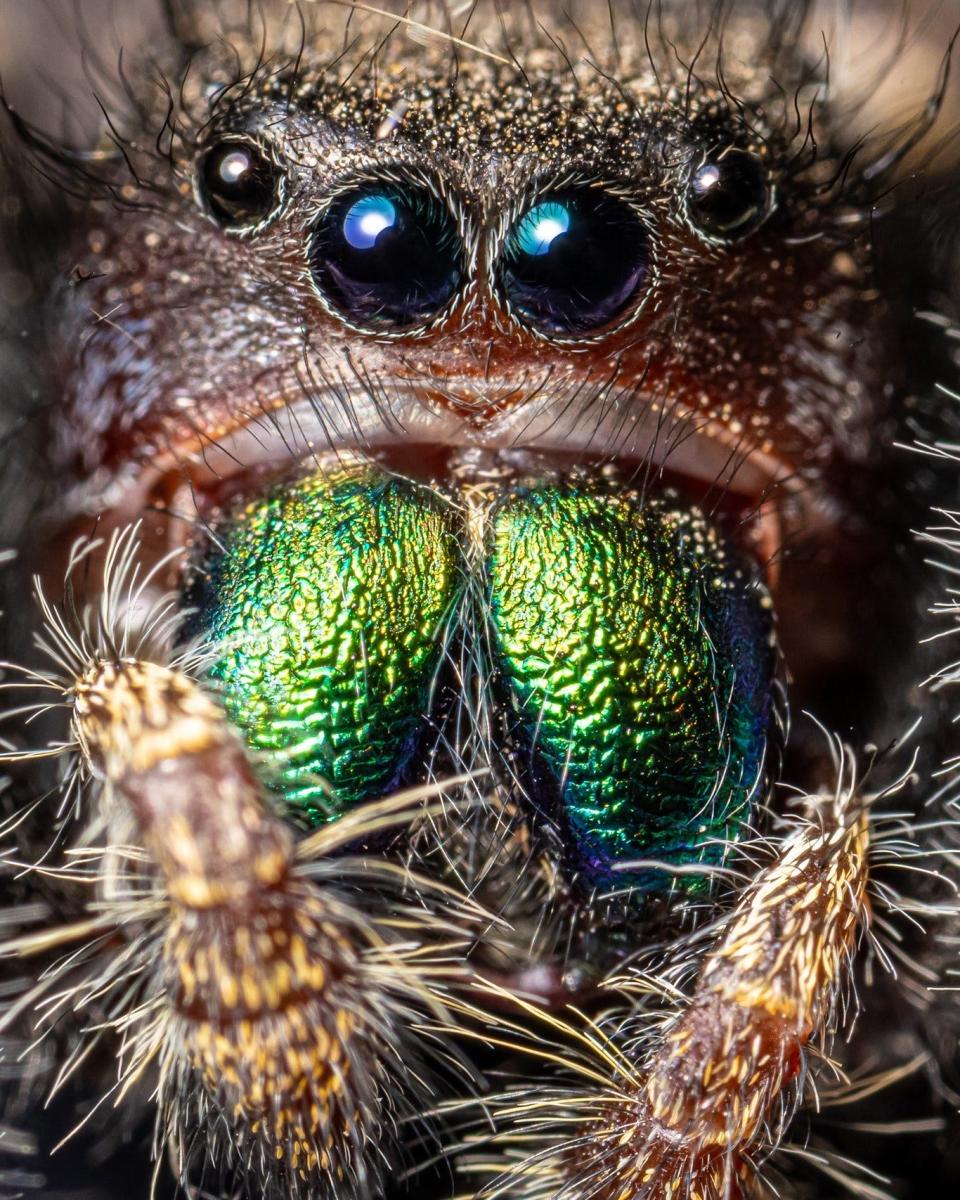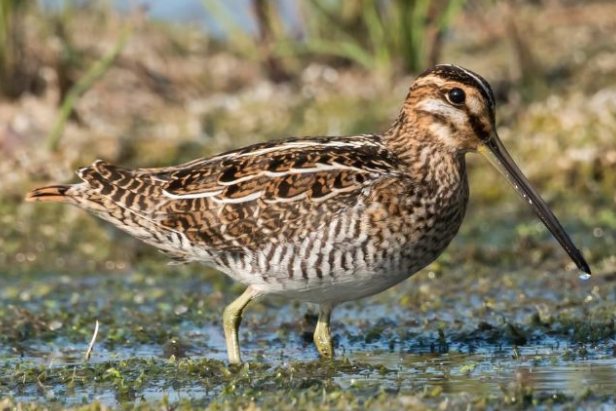Have you seen a mudpuppy or bold jumping spider lately? These 5 creatures call Kansas home

The Fall Armyworm got that name because its species moves together across fields like an army.
Mudpuppies have that name because of the "somewhat embellished notion that their squeaky vocalizations sound like a dog's bark," according to National Geographic.
Those are two of the various intriguing animals found in Kansas, with others being the Bold Jumping Spider, Eastern Hercules Beetle and Wilson's Snipe.
Here's more about those five compelling creatures.
The Armyworm
Fall Armyworms invade fields or landscapes in large groups and can cause a lawn to turn brown overnight, sometimes eating the grass down to the soil.
The species during its lifetime undergoes a metamorphosis from egg to larvae, pupa and adult moth. It damages crops while in its larvae stage.
The Fall Armyworm's diet consists primarily of grasses and such grain crops as corn. Feeding occurs late at night and in the early morning hours, said the Hutchinson News.
The species does more damage in the early fall in Kansas, and in the late fall in Texas and other areas south of the Sunflower State.
Young Armyworms are one-half to three-quarters of an inch long while mature ones can reach up to 1.5 inches long.
The Mudpuppy

The mudpuppy is among the few salamanders that make noise.
Mudpuppies are rarely seen, as they seek shelter under logs, rocks or vegetation. They tend to grow to as many as 13 inches long here.
The mudpuppy is present only in the southeast and south-central parts of Kansas, in the Marais des Cygnes, Neosho and Verdigris drainage basins, including in ponds, lakes, and streams, said the Kansas Herpetofaunal Atlas.
The Mudpuppy has a large flattened, square head, small eyes and a pair of distinctive, red feathery gills on each side of its head, it said.
The mudpuppy's eyes lack eyelids, and each of its limbs has four toes, said the Springfield, Mo., News-Leader.
More: Incurable, deer-killing chronic wasting disease now spreading in eastern Kansas counties.
Eastern Hercules Beetle

Named after the Greek demigod known for his size and strength, the Eastern Hercules Beetle is extremely big and strong compared to other beetles, said the Missouri Department of Conservation.
Its males can grown to nearly 2.5 inches long and have horns, which they use to fight to see which beetles get the best breeding sites. The females don't have horns.
Eastern Hercules Beatles are harmless to people. As grub-like larvae, they help enrich the soil by eating rotting wood, according to the Springfield News-Leader.
"You can find Hercules beetles in forests or around lights at night," it said.
The species' numbers may decline soon because of invasive ash borers. Rotten ash trees are the favorite larval nurseries of Eastern Hercules Beetle, the News-Leader said.
Bold Jumping Spider

The bold jumping spider has eight eyes, including four in front, according to the Facebook page of the Kansas Department of Wildlife and Parks.
That species is one of many types of jumping spiders found in Kansas, it said.
Jumping spiders are probably the biggest group of spiders in Kansas, and are common in yards from spring through fall.
Jumping spiders have very keen eyesight, which helps them when they are hunting and courting. They can also see in color.
Unlike some spiders, jumping spiders can be an "excellent addition" to a person's home because they prey on insects, such as flies, and don't usually establish breeding populations in the house, the KDWP Facebook page said.
Wilson's Snipe

The Wilson's Snipe has a very long bill. That species, also known as a common snipe, is named after Alexander Wilson, a highly regarded ornithologist of the early 1800s.
The Wilson's Snipe is one of two shorebird species that can be hunted in Kansas, according to the Facebook page of the KDWP.
The species nests in Canada and the northern U.S., and begins arriving in Kansas during late summer. It can remain throughout the winter.
Wilson's Snipes tend to be about 10.5 inches long, and prefer to forage on mudflats and in water less than 3 inches deep in wetlands and along shorelines.
They use their 2- to 3-inch long bill to probe into the mud for such animal foods such as aquatic insect larvae and earthworms, according to the KDWP website.
Tim Hrenchir can be reached at threnchir@gannett.com or 785-213-5934.
This article originally appeared on Topeka Capital-Journal: Kansas has intriguing species from armyworms to Hercules beetles

